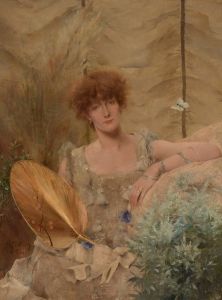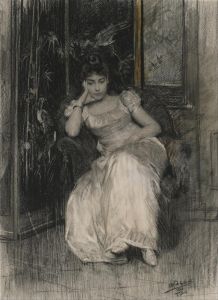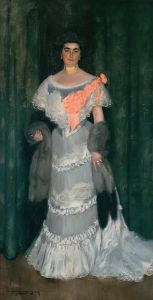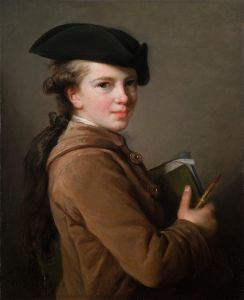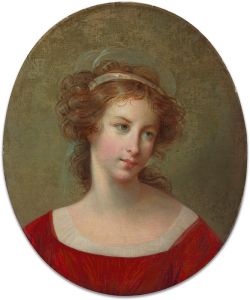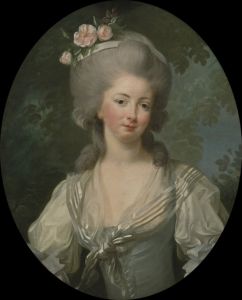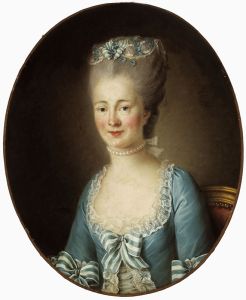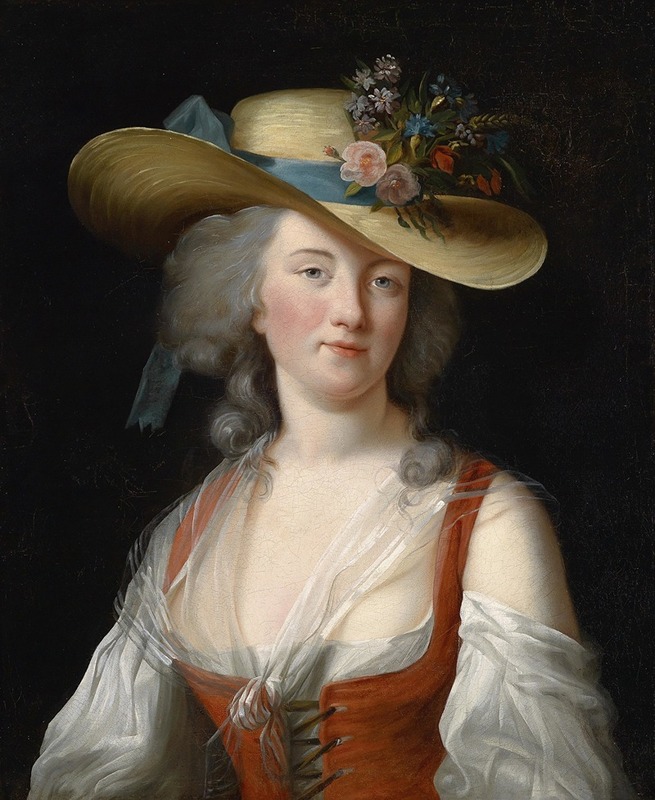
Portrait Anne Catherine Le Preudhomme de Chatenoy Comtesse der Verdun
A hand-painted replica of Elisabeth Louise Vigée Le Brun’s masterpiece Portrait Anne Catherine Le Preudhomme de Chatenoy Comtesse der Verdun, meticulously crafted by professional artists to capture the true essence of the original. Each piece is created with museum-quality canvas and rare mineral pigments, carefully painted by experienced artists with delicate brushstrokes and rich, layered colors to perfectly recreate the texture of the original artwork. Unlike machine-printed reproductions, this hand-painted version brings the painting to life, infused with the artist’s emotions and skill in every stroke. Whether for personal collection or home decoration, it instantly elevates the artistic atmosphere of any space.
Elisabeth Louise Vigée Le Brun, one of the most prominent portrait painters of the 18th century, is renowned for her exquisite portrayal of French aristocracy and royalty. Among her celebrated works is the portrait of Anne Catherine Le Preudhomme de Chatenoy, Comtesse de Verdun. This painting exemplifies Vigée Le Brun's skill in capturing the elegance and grace of her subjects, a hallmark of her artistic style.
Elisabeth Louise Vigée Le Brun was born in Paris in 1755 and demonstrated artistic talent from a young age. She became a highly sought-after portraitist, particularly known for her ability to depict the refined beauty and sophistication of her sitters. Her career flourished in the court of Louis XVI, where she became the official portraitist of Queen Marie Antoinette. Vigée Le Brun's work is characterized by its delicate brushwork, vibrant color palette, and the ability to convey the personality and status of her subjects.
The portrait of Anne Catherine Le Preudhomme de Chatenoy, Comtesse de Verdun, is a testament to Vigée Le Brun's mastery of portraiture. Although specific details about the painting's commission and the life of the Comtesse de Verdun are limited, the artwork itself provides insight into the fashion and societal norms of the time. The Comtesse is depicted with an air of elegance and poise, dressed in the luxurious attire typical of the French nobility during the late 18th century. Her attire and the setting of the portrait reflect the opulence and grandeur associated with the aristocracy of that era.
Vigée Le Brun's portraits often feature a soft, naturalistic style that was a departure from the more rigid and formal portraits of earlier periods. This approach is evident in the portrait of the Comtesse de Verdun, where the artist employs a gentle use of light and shadow to create a sense of depth and realism. The Comtesse's expression is serene and composed, capturing a moment of introspection and grace.
The painting also highlights Vigée Le Brun's attention to detail, particularly in the rendering of fabrics and textures. The intricate lace, the sheen of silk, and the delicate embroidery are depicted with precision, showcasing the artist's technical prowess. This attention to detail not only enhances the visual appeal of the portrait but also serves to emphasize the wealth and status of the sitter.
Elisabeth Louise Vigée Le Brun's work, including the portrait of Anne Catherine Le Preudhomme de Chatenoy, Comtesse de Verdun, remains highly regarded for its artistic excellence and historical significance. Her portraits offer a glimpse into the world of 18th-century French aristocracy, capturing the elegance and sophistication of her subjects with a timeless beauty. Today, Vigée Le Brun's paintings are celebrated for their contribution to the art of portraiture and their enduring appeal, continuing to be admired by art enthusiasts and historians alike.









